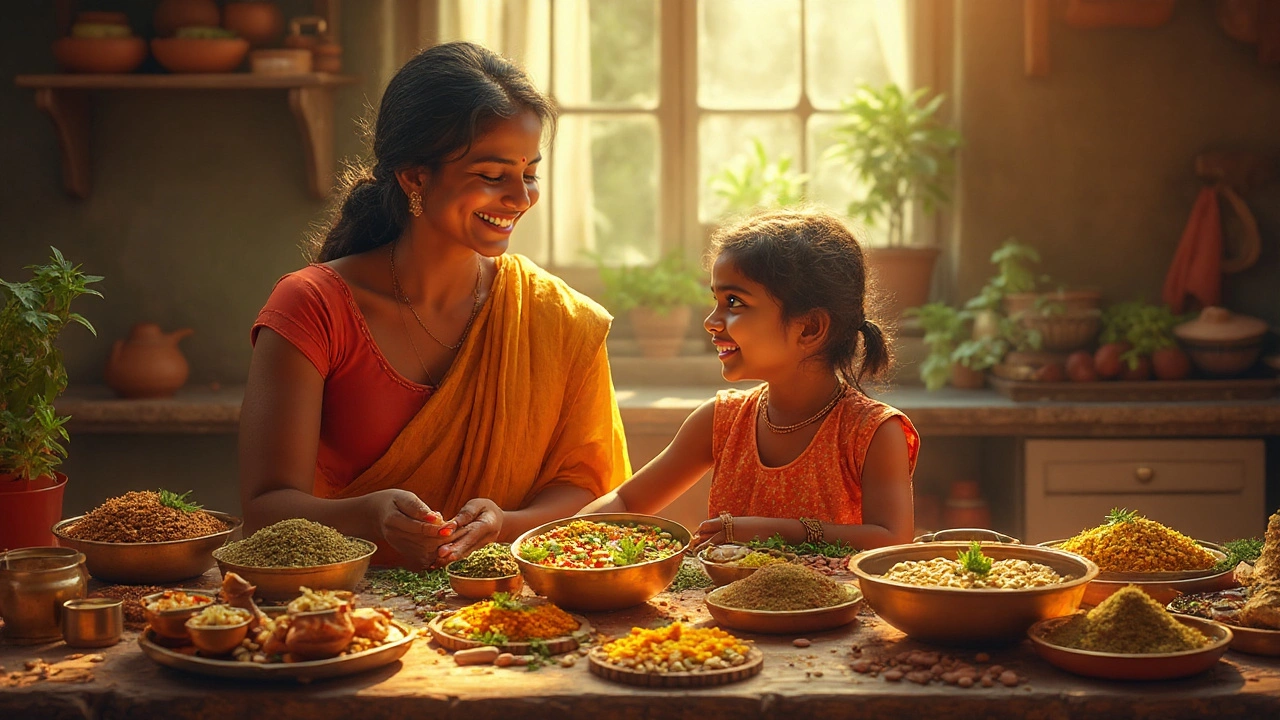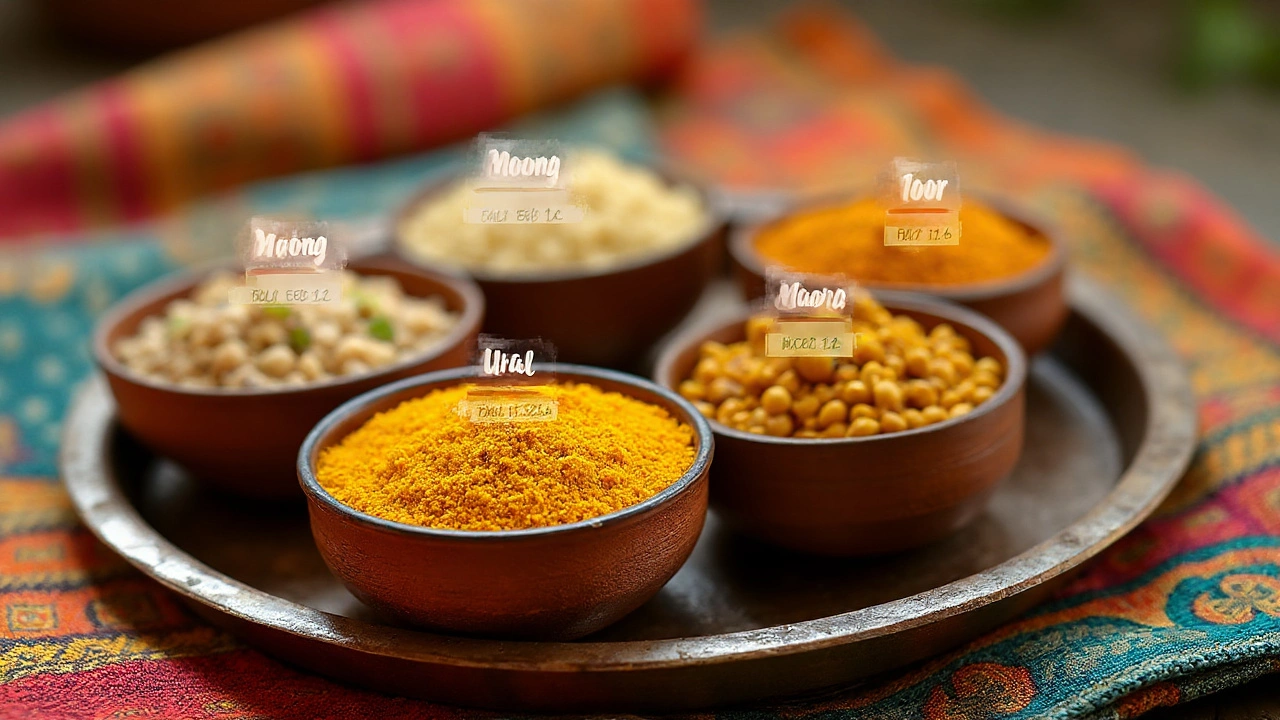Dal Nutrition Facts: Is It More Protein or Carbs? Get the Real Scoop
 Aug, 5 2025
Aug, 5 2025
Every time someone sits down to a bowl of steaming dal and rice, a debate kicks off at the table: Is dal a protein superstar or just another carb? You’ve heard a million times that protein is the building block of muscles—so people drop a chunk of dal onto their plate, thinking they have it covered. But is that clichéd belief actually true? Or are we all taking a wild guess meal after meal?
What’s Actually Inside Dal? Let’s Crack Open the Nutritional Truth
Dal isn’t just a comfort food. It hides a fascinating nutrition story that goes way beyond “healthy.” Yes, dal is loaded with nutrients, but the details are where things get interesting. When people say "dal," they might mean toor (arhar), moong, masoor, urad, chana, or even split peas. Each variety has its own nutrition angle.
Here’s the kicker: dal—basically lentils and pulses—offers both carbs and protein. But the punchline? There’s usually more carbs per serving than protein, even though it’s often marketed as a great protein source, especially for vegetarians. Take a look at the real deal:
| Type of Dal | Carbs (per 100g cooked) | Protein (per 100g cooked) | Fiber (per 100g cooked) |
|---|---|---|---|
| Moong Dal | 15g | 7g | 2g |
| Toor (Arhar) Dal | 20g | 6g | 4g |
| Masoor Dal | 18g | 7g | 4g |
| Urad Dal | 26g | 6g | 4g |
| Chana Dal | 18g | 7g | 6g |
What’s clear from this? While dal does contain protein, the carb content is higher. But wait, before you throw dal out of your diet thinking it’s just another starchy food, you need to hear the full story. The protein in dal is pretty good quality and pairs well with carbs in dal, creating a slow, steady release of energy. Also, dal brings in an impressive amount of fiber, iron, B vitamins, and minerals—things you don’t always get from animal-based proteins.
Here’s a fun fact that surprises a lot of folks: India is the world’s largest consumer and producer of pulses. Yet, on average, Indians eat less than the recommended protein per day. A survey by the Indian Market Research Bureau a few years ago found nearly 80% of Indians don’t meet their daily protein target! Dal helps, but it can't be your only answer unless you pile on a really generous portion, which is honestly not practical.

Protein vs Carbohydrate—Why Dal Gets Called Both
Here’s where the labels get blurry. Nutrition advice in India, growing up, often runs like “eat dal for protein, eat rice or roti for carbs.” It’s not completely wrong, but it’s way oversimplified. Both dal and grains have a bit of everything, but in different amounts. Dal gives you both protein and carbs, with a splash of fiber and tiny amounts of fat. Flip over to roti or rice, and you see mostly carbs with just a sprinkle of protein.
The secret sauce is the type of protein in dal. Dal has all the “essential” amino acids (think of them as protein Legos your body can’t make on its own), but a few of those are present in small amounts—especially methionine. Rice and wheat have more of those missing pieces, which is why classics like dal-chawal and dal-roti are actually a smart combo. They round each other out, delivering a complete protein punch that can rival animal-sourced foods with a little cleverness. Vegans and vegetarians, you’re in luck—no need to gulp down protein shakes if your plate is stacked with a combo like this!
So, is dal a protein? Sort of. But you also have to see it as a moderate carb source. Here’s a trick nutritionists use: classify foods with more than twice as much carbs as protein as “carbohydrate rich.” By that science, dal falls in the carb camp. For every 100g of cooked dal, you usually get around 6-7g protein and 15-26g carbs (see the table above).
Another fun fact: Compared to, say, chicken breast, which gives you nearly 30g of protein and almost no carbs per 100g, dal looks more like a carb, but in a good way. Unlike other carb sources, dal’s carbs digest slowly, no wild blood sugar ups and downs, and the fiber feeds your gut bacteria. You get a steady fuel supply, no post-lunch carpet crash, and a supportive gut.
But here’s a smart move: If you want to up your protein intake, boost the “power” of your dal. Add more dal to your serving, mix in sprouts (like moong sprouts), or even toss in paneer, soy chunks, or egg if you’re non-veg on the side. This is how you hack the humble dal bowl into an actual protein source, especially for gym-goers or those on a training diet. If you go low-oil and skip heavy cream or butter, your bowl remains high-protein without turning into a calorie bomb.

How to Make Dal Work for YOUR Diet—Tips and Fast Facts
This is not some “one size fits all” story. Everyone’s daily protein needs vary. An average office-goer might do fine with 50-60g protein per day, but if you’re into fitness or recovering from illness, that number shoots up. If you only eat dal as a protein: to get 60g protein, you’d need to eat 900g of cooked dal a day—imagine the gas!
So, the realistic move is to make dal part of your plate, not your entire protein source. Here’s how you can level up dal’s nutrition game:
- Pair dal with whole grains. Brown rice, millet, or whole wheat roti plus dal upgrades your amino acid profile. This is why traditional Indian combos work so well.
- Blend different types of dal together. Mix chana, moong, masoor, and urad to get a wider nutrient spread.
- Don’t throw away the dal cooking water—that’s where lots of B-vitamins hang out. Sip it as a broth or stir back into your dal.
- Add a handful of spinach, methi, or drumstick leaves while cooking dal. Boosts the mineral and vitamin content without extra calories.
- If you’re thinking protein, pair dal with soy chunks, paneer, eggs or a small piece of grilled chicken on the side. For pure veg meals, think tofu or tempeh.
- Moong dal is easiest on your stomach if you have tummy trouble, indigestion, or recovering from illness. Urad dal, while tasty, can be heavier and more likely to cause bloating in sensitive people.
- Want more fiber and slow carbs? Stick to whole dals (like sabut moong or whole masoor), not the split and polished variety.
People often ask me for a fool-proof dal recipe for busy work weeks. Here it is: dump soaked dal, diced tomato, ginger, and a handful of greens into your pressure cooker with turmeric and salt. Cook, mash, temper with garlic tadka, and you’re set. This version packs in extra nutrition and takes less than 20 minutes start to finish.
Here’s a list of common dals with their most frequent use, just to make your ingredient hunt easier:
- Moong dal: Light, easy to digest, great for khichdi, dal soup
- Masoor dal: Quick-cooking, earthy flavor, good for tarka dal
- Toor dal: Classic sambar, South Indian style dal, medium texture
- Urad dal: Used in dals and also for crispy dosas and vadas
- Chana dal: Nutty, sweet, great for dal fry or mixing in sabzis
Here’s something you might not realize: Dal isn’t just a dinner staple. In Bangalore where I live, breakfast can mean piping hot moong dal cheela, chana dal idlis, or sambar with ragi mudde. Dal sneaks into every meal, in one form or another. Even the famous “Kesari Bath” is often served with a chunky sambar on the side.
If you want a “hack” for more protein bang, try adding a side of yogurt to your dal-rice plate. Not only are you topping up your protein, but you’re also supporting gut health—a bonus for anyone living in India’s crazy, sometimes unpredictable food scene!
The verdict? Dal is a bit of both—a smart, sustainable source of both protein and carbs. It’s not the meat-level protein hero some claim, but with clever combos and tweaks, it earns its spot in any healthy Indian diet. The trick is to use dal’s strengths: plant protein, filling fiber, all-day energy, and versatility. Don’t let the carb count scare you off. Embrace dal for what it is, and tweak your plate to match your protein needs—without turning every meal into a science experiment!